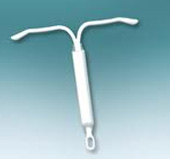
THURSDAY, Oct. 18 (HealthDay News) — A new survey of American women’s contraceptive preferences show that while the Pill is still the favorite method, long-acting alternatives such as intrauterine devices (IUDs) are gaining ground.
One method of preventing pregnancy that is losing ground: condoms.
The report, from the National Center for Health Statistics (NCHS) at the U.S. Centers for Disease Control and Prevention, looked at data from interviews conducted with nearly 23,000 females aged 15 to 44 between 2006 and 2010.
Overall, close to two-thirds (62 percent) of those quizzed were using some form of contraception at the time of the interview, say researchers led by NCHS statistician Jo Jones. About one in 10 women (11 percent) at risk of an unwanted pregnancy said they were not using any form of contraception.
“Of women using a contraceptive method in the month of the interview, the most common method used are the pill (28.6 percent, or 10.6 million women) and female sterilization (27 percent, or 10.2 million women),” the researchers said. Those percentages are roughly similar to rates tabulated back in 1995, the CDC noted.
However, the use of IUDs has risen from less than 1 percent in 1995 to almost 6 percent of women by 2006-2010, the CDC team noted. And use of the contraceptive patch or ring has risen from 4 percent in 1995 to 7 percent by the time of the latest survey.
Younger women (under 30) and blacks were less likely to use these long-acting methods than older women and whites, the report found.
At the same time, the condom’s popularity has taken a tumble, from 20 percent in 1995 to 16 percent a decade later. “Fewer women report that their partners are using condoms as their current, most effective contraceptive method,” the report authors wrote.
Planned Parenthood weighed in on the new findings. In a statement, Dr. Vanessa Cullins, the group’s vice president for external medical affairs, said that “Planned Parenthood is encouraged by this new CDC data, which shows an increasing number of women and teens are using long-acting reversible contraceptives [LARC] like IUDs and implants, as they are among the most effective methods for preventing unintended pregnancy.”
However, she added that, “while the use of long-acting birth control methods like IUDs has grown, this data shows that women who are at the highest risk for unintended pregnancy are less likely to use them.”
More information
There’s more on contraceptive options at the U.S. Centers for Disease Control and Prevention.

